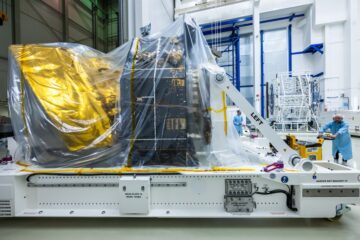Continuing our weekly Astronomy & You series we have an article explaining the invention of Wi-Fi from Tony Beasley. Tony is an IAU member and is President of Commission B4 Radio Astronomy within the organisation. Tony is also the Director of The National Radio Astronomy Observatory in the USA.
The history of radio astronomy includes numerous technological breakthroughs which were developed to increase the sensitivity and capabilities of our telescopes. Improvements in antenna designs, feed horns, receiving elements, amplifiers, digital processing and storage technology eventually all found their way into applications which support our modern life.

One notable success in this area has been the invention of Wi-Fi. Using techniques which were developed for analyzing radio emission from black holes, a team of scientists at the Commonwealth Scientific and Industrial Research Organization (CSIRO) in Australia developed a new technique for transferring information wirelessly. They developed a microchip, together with associated signal processing schemes, that enabled radio waves to be used in complex environments where the reflections of a signal off many surfaces can confuse the information transfer. This technique is known as Wi-Fi, named in analogy to the Hi-Fi used for high-quality reproduction of music. The patents awarded to the inventors paved the way for companies around the world to begin using Wi-Fi to exchange information between networks and portable devices.

Use of the techniques developed for Wi-Fi will continue in future as the use of 5G mobile phone systems and Internet-of-Things (IOT) devices in daily life grows. Modern life depends critically on the flow of data, and science like radio astronomy will continue to produce technologies to benefit all humankind.




0 Comments